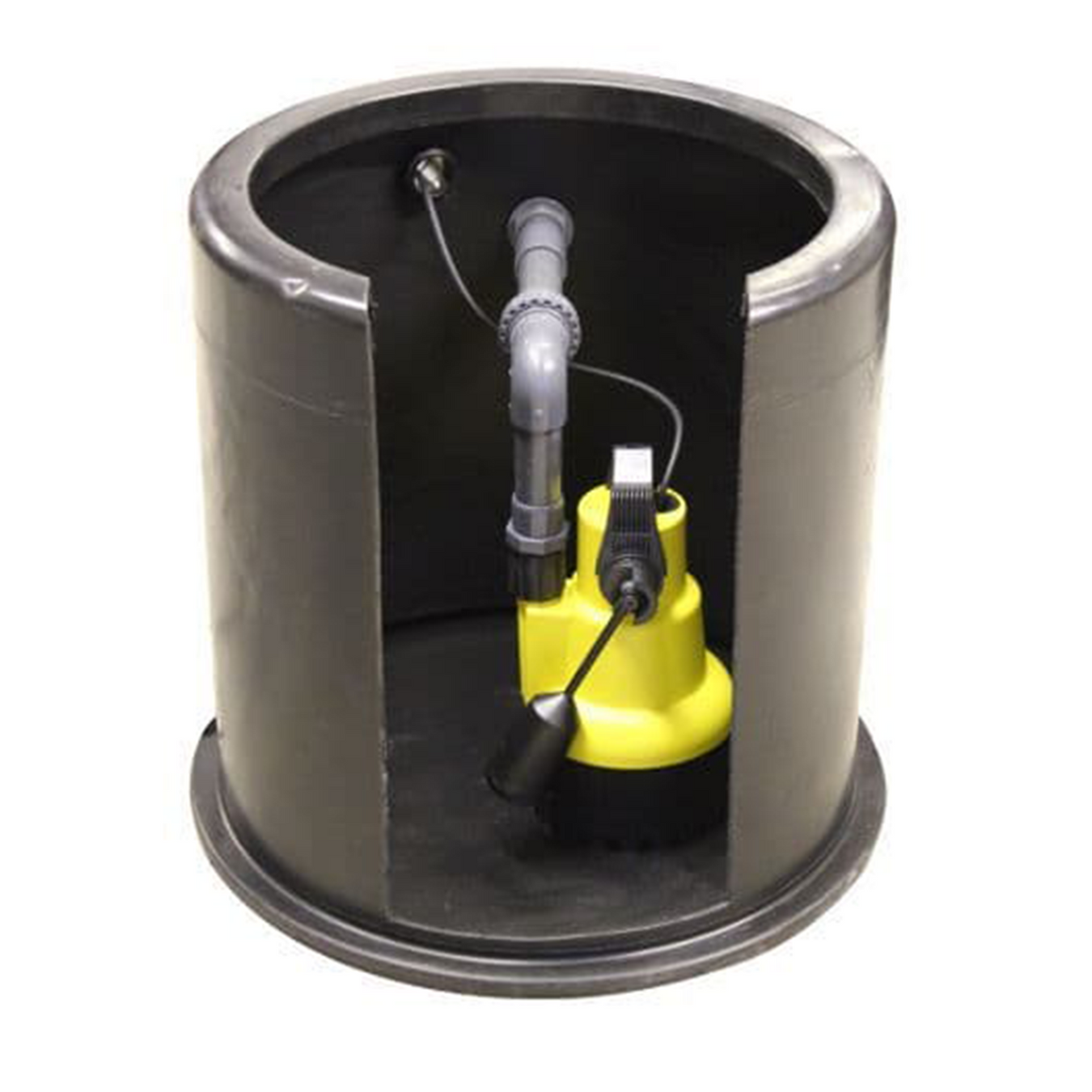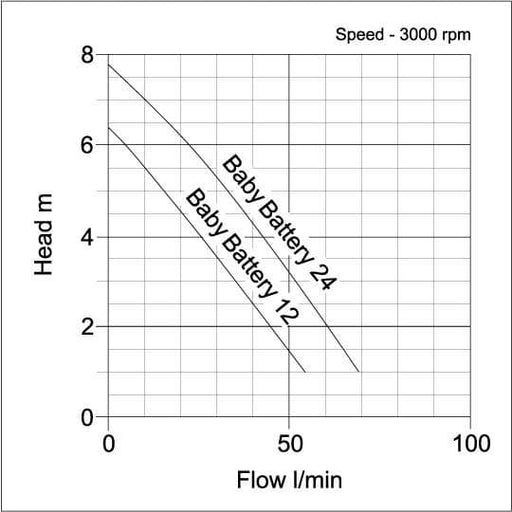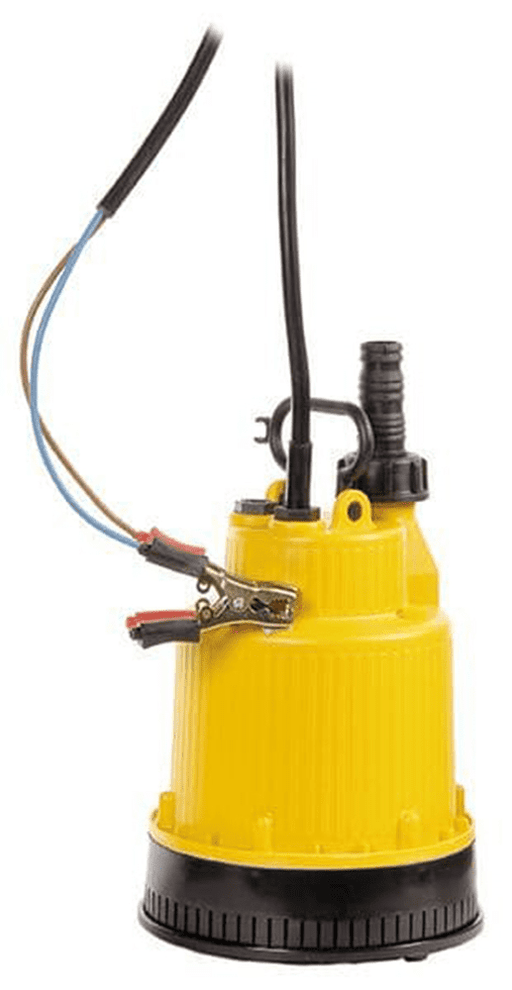Submersible Pumps
Submersible pumps are the most popular style of pumps used in homes and gardens. They are an efficient and effective way of pumping water. Submersible Pumps must be submersed in water. They are regularly referred to as ‘sump pumps’ because they are usually placed inside a sump or chamber.
How to choose a Submersible pump:
- Firstly, evaluate the size of the area or how much water needs to be removed The main difference with the pump models are how quickly they can pump water (the flow rate). For example the BPS-80 model has a flow rate of 40ltrs a minute and the BCV3700-80 model has a flow rate of 1500ltrs a minute.
- Select the correct pump for the liquid to be pumped, i.e. clean water, dirty water, salt water etc.
- Will the pump be running 24-7? If so you may wish to look at our pond pumps which are specially designed for this.
- Select the pump that clears the water to a depth you require. Puddle pumps can pump water as low 1mm whereas submersible pumps tend to be around 30mm.
- Finally, assess how far you would need to pump the water away and ensure an adequate ‘head’. Per 10m of horizontal pumping, you can assume a 1m head loss.
- When you have worked this out you should find it easy to find the right pump for the job.
If you are still unsure, you can give us a call and speak to one of our pump experts who will be more than happy to help you.
Submersible Pump Uses:
Submersible pumps, or sump pumps are great for pumping groundwater, seepage or rainfall, and are recommended for flood defence schemes. Submersible pumps can be effectively used in construction or site drainage enabling contractors to continue working in wet weather. The main advantage to submersible pumps are that they generally do not require priming as they are already submersed in the water. The submersible pumps listed are also electric, so they can be used internally or externally (unlike engine driven pumps).
Submersible pumps each have different specialised uses and applications include:
- Well or borehole pumping
- Site drainage
- Water transfer
- Flood protection
- Waste water removal
- Water features for ponds
Pumps come in many different variations for the removal of different liquids, including: clean and dirty water, salt water and chemicals. We have a broad range available, with 13 different series of submersible pumps in this category.
Submersible or sump pumps are often highly recommended for flood defence uses as they are small and easily stored, quick to use and are extremely effective at pumping water.
Groundwater and flood water can be pumped away effectively with a submersible pump, helping to keep an area dry. Submersible pumps tend to have higher flow rates than puddle pumps, however generally they shouldn’t run dry and should be installed in a chamber (unless otherwise specified).
They can be wired in permanently and if the pump is automatic it will trigger when necessary, making it ideal for use in a passive flood defence scheme. Unlike engine driven pumps they do not have to ‘suck’ water up through a pipe as they are submerged in the water; making them quick and easy to use.
Sump Pumps:
In permanent installations, submersible pumps are often used in sumps as the pumps should not run dry. Sumps are chambers in the ground which are designed to fill with water, meaning the pump is submersed. If you do not have a chamber (and don’t wish to install one) but require water pumping to a low-level you need a special type of submersible pump, called a Puddle Pump. Puddle Pumps are specially designed for this and we have a separate section for these pumps. Sump Pumps can be installed either internally to manage flooding, or externally to manage a drainage system or help control groundwater flooding. Groundwater flooding is poorly understood, but it happens when high rainfall fills aquifers in the ground. Groundwater flooding can be mitigated against by installing a sump pump– helping to keep property dry.
How do Submersible/Sump Pumps work?
Submersible Pumps have 5 main components: The inlet, impeller, electric motor, housing and outlet.
Submersible pumps use a sealed electric motor, to convert electrical energy into kinetic energy. The motor spins at high speed, and has an impeller attached to the end of it on a shaft. As the impeller spins it creates a centrifugal force. As a result, a pressure difference occurs, which draws water in through the inlet of the pump, and pushes it under pressure out of the outlet, which can be connected to a pipe.
It is important to note that different submersible pumps have different uses, and you need to select the most suitable pump for your requirements.
Submersibles are designed to work whilst being fully submersed in liquid. This ensures the pump is kept cool meaning it can run for extended periods of time without supervision. Our range or submersible pumps are very reliable and automatic versions are often only ever seen twice in their lifetime, once when they are installed and once when they eventually need replacing (which can be up to 20yrs.)
Filters
-
Original price £222.46 - Original price £233.24Original priceFrom £222.46 £266.95 (inc. VAT)£222.46 - £233.24Current price £222.46 £266.95 (inc. VAT) £266.95 (inc. VAT)| /
Baby Battery Submersible Water Pump - Umbra Pompe
Umbra Pompe- Manual or auto models available
- 12V or 24V models available
- Ideal for sumps & bilges, industry, leisure, processing, transfer and filling
This range of submersible pumps from Umbra Pompe are ideally suited for application in sumps & bilges, industry, leisure, processing, transfer ...
View full detailsOriginal price £222.46 - Original price £233.24Original priceFrom £222.46 £266.95 (inc. VAT)£222.46 - £233.24Current price £222.46 £266.95 (inc. VAT) £266.95 (inc. VAT)| /







